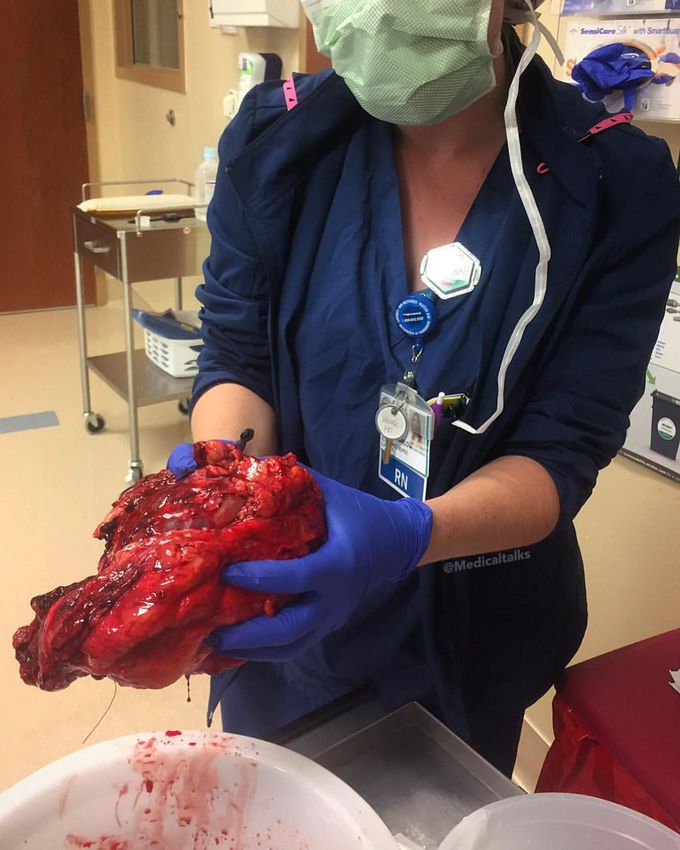


Left nephrectomy performed for a patient who had Polycystic Kidney Disease (PKD)!!
In PKD, clusters of fluid-filled sacs, called cysts, develop in the kidneys and interfere with their ability to filter waste products from the blood. The growth of cysts causes the kidneys to become enlarged and can lead to kidney failure. The main feature of PKD is a bilateral progressive increase in the number of cysts, that may lead to end-stage renal disease due to destruction of the parenchyma, which eventually necessitates the surgical removal of the kidney and transplantation. The disease is inherited with an autosomal dominant pattern, but cysts are not usually present at birth, they develop slowly over time, so the onset of renal failure occurs in middle age to later adult life. Patients experience hypertension and chronic renal failure, but they may also experience experience cyst hemorrhage, renal infection, or nephrolithiasis (kidney stones). A non-invasive, reliable and inexpensive diagnosis is made by ultrasound and the treatment is no other than removing the kidneys and performing a transplantation. Photo by @gingerlyn3
Hemodynamic stimuli&nonhemodynamic stimuliEffects of sugar on teeth


